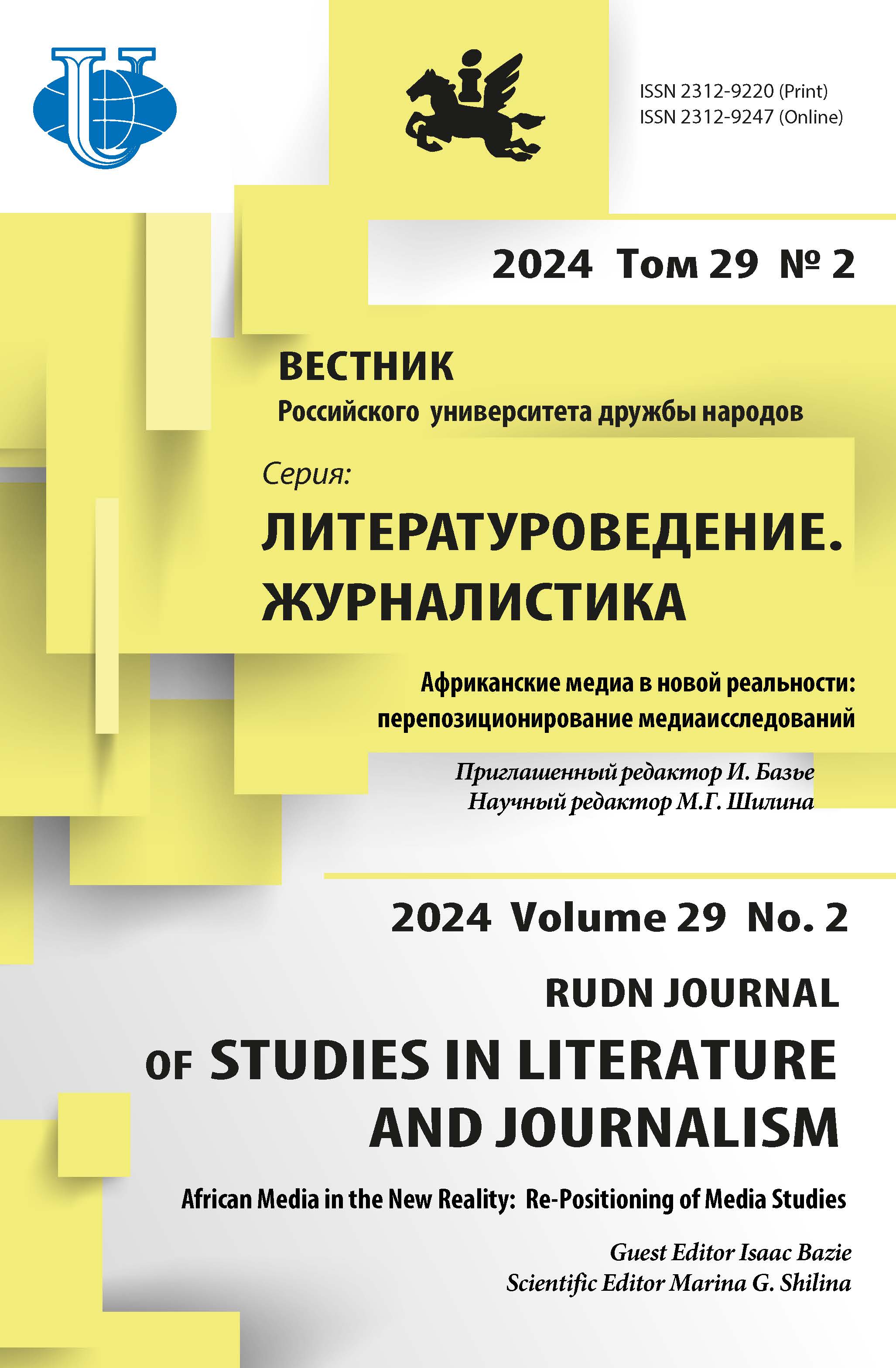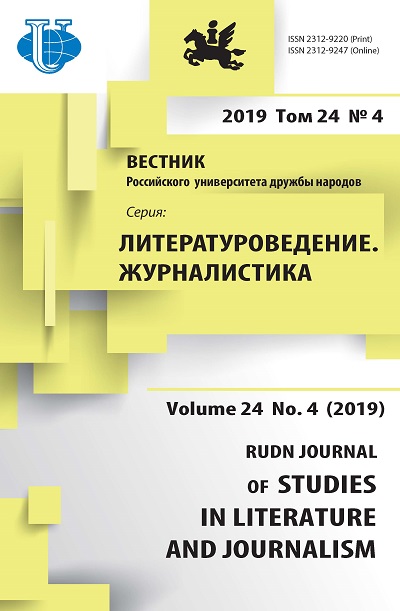Социум и люди с аутистическими расстройствами: анализ дескрипторов сообщений в социальных сетях
- Авторы: Важенина О.А.1, Лободенко Л.К.1
-
Учреждения:
- Южно-Уральский государственный университет (национальный исследовательский университет)
- Выпуск: Том 24, № 4 (2019)
- Страницы: 744-755
- Раздел: Журналистика
- URL: https://journals.rudn.ru/literary-criticism/article/view/23074
- DOI: https://doi.org/10.22363/2312-9220-2019-24-4-744-755
Цитировать
Полный текст
Аннотация
На основании дескрипторов сообщений в социальных медиа, опубликованных в цифровом медиапространстве, авторы исследуют процесс гуманизации общества в отношении людей с расстройствами аутистического спектра и его взаимосвязь с рецепцией проблем данной категории населения обществом. Выявляется взаимосвязь контента сообщений в социальных медиа, а также инструментов данного типа медиа и общей степени гуманизации общества как на социальном, так и политическом уровнях. Отмечаются типологических особенности такого инструмента социальных медиа, как хештег, при освещении проблематики людей с расстройствами аутистического спектра, а также воздействие этих особенностей на рецепцию сообщений по данной тематике как отечественными, так и англоязычными пользователями.
Ключевые слова
Об авторах
Ольга Анатольевна Важенина
Южно-Уральский государственный университет (национальный исследовательский университет)
Автор, ответственный за переписку.
Email: vazheninaoa@susu.ru
кандидат филологических наук, доцент кафедры журналистики и массовых коммуникаций, факультет журналистики, Институт социально-гуманитарных наук
Российская Федерация, 454080, Челябинск, пр-т Ленина, 76Лидия Камиловна Лободенко
Южно-Уральский государственный университет (национальный исследовательский университет)
Email: lobodenkolk@susu.ru
доктор филологических наук, директор Института социально-гуманитарных наук, профессор кафедры журналистики и массовых коммуникаций
Российская Федерация, 454080, Челябинск, пр-т Ленина, 76Список литературы
- CDC estimates 1 in 88 children in United States has been identifi ed as having an autism spectrum disorder // Center for Disease Control and Prevention. CDC Division of News & Electronic Media. 2012. Vol. 404. Pp. 639-3286. URL: https://www.cdc.gov/media/ releases/2012/p0329_Autism_disorder.html (дата обращения: 29.06.2019).
- Гилярова М.Г. Дескрипторы интернет-общения как показатель развития семантической глобальной сети для электронной экономики // Экономический вектор. 2017. № 3 (10). С. 56-58.
- Церюльник А.Ю. Использование хештега в инстаграм-блогах // Международный научно-исследовательский журнал. 2018. № 6-2 (72). С. 110-115.
- Хештег. URL: https://wiki.rookee.ru/xeshteg (дата обращения: 20.05.2019).
- Агафонова О.В. Хештеги в Твиттере и Инстаграме: структурные и стилистические особенности // Жанр. Стиль. Образ. Актуальные вопросы современной филологии: межвузовский сборник статей с международным участием. Киров, 2016. С. 169-173.
- Мамонова Н.В. Специфика интернет-дискурса в социальных сетях (на материале сети инстаграм) // Когнитивные исследования языка. 2018. № 34. С. 450-453.
- Патрушева Л.С. #Тотальныйдиктант: коммуникативные возможности центрального хештега образовательной акции // #ТОТСБОРНИК: сборник научных трудов по материалам Тотального диктанта. Новосибирск, 2017. С. 221-226.
- Печенкина Е.Д. Реакции в социальных сетях на парижские теракты и подрыв российского самолета над Синайским полуостровом в Египте: разные уровни восприятия человеческой трагедии в российском и европейском обществах // Вестник Удмуртского университета. Социология. Политология. Международные отношения. 2017. Т. 1. № 1. С. 84-94.
- Степанов В.Н. Трансгрессивность как сущностная характеристика современного медиатекста в мировой сети // Актуальные проблемы стилистики. 2016. № 2. С. 149-158.
- Степанов В.Н. Трансгрессия и трансгрессивность в медиапространстве и медиатексте // Иностранные языки в высшей школе. 2016. № 1 (36). С. 23-33.
















